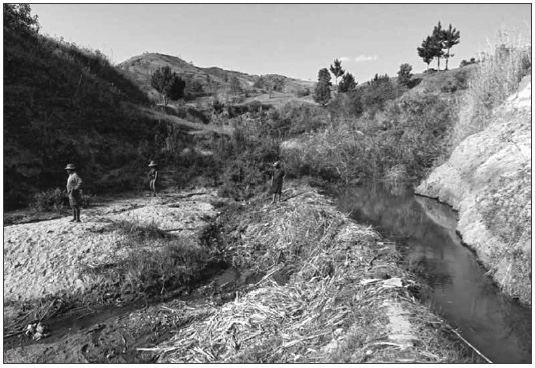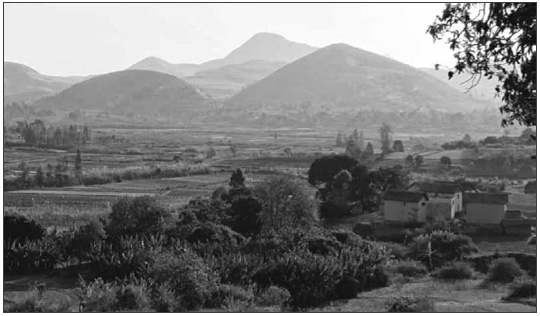Families need help to be able to irrigate their field
Families need help to be able to irrigate their field
An example from Madagascar
by Xavier Mühlethaler, Nouvelle Planète, Lausanne
In Ambatomitsangana, the daily income amounts to less than one franc per family. With the help of an irrigation system, families would be able to improve the crop yield of their fields.
The sun has just set behind the 1489 metres peak of Betahezana Table Mountain. Ears of rice sway in the breeze. The view of this valley is simply breathtaking, although it is deceiving and in stark contrast to the tough living conditions of the 3,000 inhabitants of the village’s seven hamlets who are mostly employed in farming.
Every year, after the rain season ends, the same ritual can be observed: Farmers meet up and divide into several smaller groups. They organise in order to divert the river that winds its way through the plain so as to have it irrigate about 20 hectares of farmland. It takes about a week of tireless community work to effectively have irrigated only a third of the land area (60 ha). However, this is not the only worry: due to deforestation, the plain has silted. Moreover, because the cultivation methods are of little sustainability, the productivity level is low. The consequences are dramatic: within the last ten years, the rice crop per hectare has continually decreased – a trend that farmers of the region are seeking to reverse.

(picture www.nouvelle-planete.ch)
Managing the water distribution
The inhabitants would like to build a retaining wall, 17 metres in length and 3 metres in height, in order to divert the water into the main irrigation canal, to expand the entire irrigation system and to make it more efficient. Apart from an instruction course for the management committee and the beneficiaries, there are plans for technical training to be given in order to secure the upkeep of the irrigation plant. On a participatory basis, rules and regulations of use that each individual user has to adhere to, are to be developed. A “water watch” is meant to ensure that those rules are being kept and that non-compliance with those rules is sanctioned. Additionally, campaigns are planned in order to sensitize the population toward their environment and sustainable, organic cultivation methods (agroecology). In doing so, theory and practice are meant to be unified.
Snowball effect
The villagers hope to be able to irrigate all of their 60 hectares of acreage all year around and to improve their agricultural production quantitavely as well as qualitatively. After reaching a certain degree of food security, they would be able to sell their surplus products on the local markets and improve their economical situation. Thus, the project would be able to help up to 80 farmer families pay for their children’s school fees and cover their medical bills. The project’s effects on the local population are multifaceted and not limited to the agricultural sector.

(picture www.nouvelle-planete.ch)